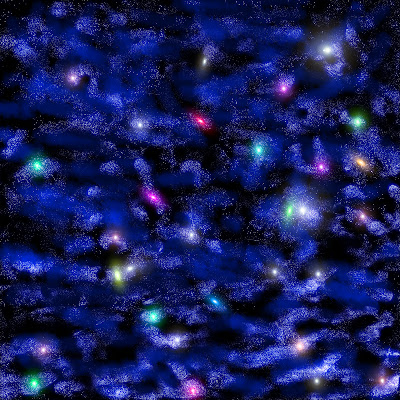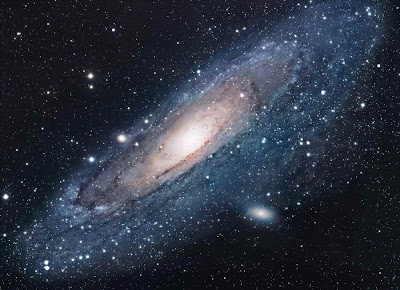skip to main |
skip to sidebar
Wow .. this is so cool picture that I do not konw about this. Maybe it looks like sattelite. But it so happy for sharing to you all of astronomers. We love astronomy as we love everyone among us.
This is Aurora from my friend on twitter. He is an astronauts and he work on the space. Exactly on International Space Station. He always share his photo on twitter that interesting to him and maybe also interesting for us. That Aurora captured on space, so it look so great isn't it ??
Sattelite
Wow .. this is so cool picture that I do not konw about this. Maybe it looks like sattelite. But it so happy for sharing to you all of astronomers. We love astronomy as we love everyone among us.
Aurora Look From Space
This is Aurora from my friend on twitter. He is an astronauts and he work on the space. Exactly on International Space Station. He always share his photo on twitter that interesting to him and maybe also interesting for us. That Aurora captured on space, so it look so great isn't it ??
Hourglass Nebula
 |
| Hourglass Nebula |
| The Engraved Hourglass Nebula (also known as MyCn 18) is a young planetary nebula situated in the southern constellation Musca about 8,000 light-years away from Earth. It was discovered by Annie Jump Cannon and Margaret W. Mayall during their work on an extended Henry Draper Catalogue (the catalogue was built between 1918 and 1924). At the time, it was designated simply as a small faint planetary nebula. Much improved telescopes and imaging techniques allowed the hourglass shape of the nebula to be discovered by Raghvendra Sahai and John Trauger of the Jet Propulsion Laboratory on January 18, 1996. It is conjectured that MyCn 18's hourglass shape is produced by the expansion of a fast stellar wind within a slowly expanding cloud which is denser near its equator than its poles. |
Eagle Nebula
 |
| Eagle Nebula |
| The Eagle Nebula (catalogued as Messier 16 or M16, and as NGC 6611) is a young open cluster of stars in the constellation Serpens, discovered by Jean-Philippe de Cheseaux in 1745-46. Its name derives from its shape which is resemblant of an eagle. It is the subject of the famous Pillars of Creation photograph by the Hubble Space Telescope, which shows pillars of star-forming gas and dust within the nebula. |
Eskimo Nebula
 |
| Eskimo Nebula |
| The Eskimo Nebula (NGC 2392), also known as the Clownface Nebula or Caldwell 39, is a bipolar double-shell planetary nebula (PN). It was discovered by astronomer William Herschel in 1787. The formation resembles a person's head surrounded by a parka hood. It is surrounded by gas that composed the outer layers of a Sun-like star. The visible inner filaments are ejected by strong wind of particles from the central star. The outer disk contains unusual light-year long orange filaments. NGC 2392 lies more than 2,870 light-years away and is visible with a small telescope in the constellation of Gemini. |
Bernard's Loop Nebula
 |
| Bernard's Loop Nebula |
| The Barnard's Loop Nebula(catalogue designation Sh 2-276) is an emission nebula in the constellation of Orion. It is part of a giant molecular cloud which also contains the bright Horsehead and Orion nebulae. The loop takes the form of a large arc centred approximately on the Orion Nebula. The stars within the Orion Nebula are believed to be responsible for ionizing the loop. The loop extends over about 600 arcminutes as seen from Earth, covering much of Orion. It is well seen in long-exposure photographs, although observers under very dark skies may be able to see it with the naked eye. |
Boomerang Nebula
 |
| Boomerang Nebula |
| The Boomerang Nebula (also called the Bow Tie Nebula) is a protoplanetary nebula located 5,000 light-years away from Earth in the constellation Centaurus. The nebula is measured at 1 K (-272.15 °C; -457.87 °F), the naturally coldest place currently known in the Universe. The Boomerang Nebula was formed from the outflow of gas from a star at its core. The gas is moving outwards at a speed of about 164 km/s and expanding rapidly as it moves out into space. This expansion is the cause of the nebula's very low temperature. The Boomerang Nebula was photographed in detail by the Hubble Space Telescope in 1998. It is believed that the nebula is a star or stellar system evolving toward the planetary nebula phase. Keith Taylor and Mike Scarrott called it the Boomerang Nebula in 1980 after observing it with the Anglo-Australian telescope at the Siding Spring Observatory. Unable to view it with the same detail as with the Hubble, the astronomers saw merely a slight asymmetry in the nebula's lobes, suggesting a curved shape like a boomerang. The high-resolution Hubble images indicate that the Bow Tie Nebula would perhaps have been a better name. |
Horse Head Nebula
 |
| Horse Head Nebula |
| The Horsehead Nebula (also known as Barnard 33 in emission nebula IC 434) is a dark nebula in the constellation Orion. The nebula is located just to the south of the star Alnitak, which is farthest east on Orion's Belt, and is part of the much larger Orion Molecular Cloud Complex. The Horsehead Nebula is approximately 1500 light years from Earth. It is one of the most identifiable nebulae because of the shape of its swirling cloud of dark dust and gases, which is similar to that of a horse's head when viewed from Earth. The shape was first noticed in 1888 by Williamina Fleming on photographic plate B2312 taken at the Harvard College Observatory. |
Cat's Eye Nebula
 |
| Cat's eye Nebula |
| The Cat's Eye Nebula (NGC 6543,) is a planetary nebula in the constellation of Draco. Structurally, it is one of the most complex nebulae known, with high-resolution Hubble Space Telescope observations revealing remarkable structures such as knots, jets, bubbles and sinewy arc-like features. In the center of the Cat's Eye there is a bright and hot star; around 1000 years ago this star lost its outer envelope, producing the nebula. It was discovered by William Herschel on February 15 1786, and was the first planetary nebula whose spectrum was investigated by the English amateur astronomer William Huggins in 1864. The results of the latter investigation demonstrated for the first time that planetary nebulae consist of hot gases, but not stars. Currently the nebula has been observed across the full electromagnetic spectrum, from far-infrared to X-rays. |













